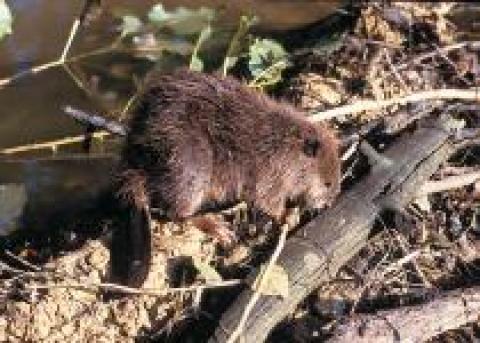The beaver (Castor canadensis) is North America’s largest rodent and can weigh more than 100 pounds. Beaver eat both woody and non-woody vegetation. Also, beaver sometimes damage boat docks. These habits, as well as their dam-building activities that can flood crop fields and roadways, can lead to conflicts with property owners.

The Wildlife Code of Missouri classifies the beaver as a furbearer and game mammal that may be taken during the prescribed trapping season. See current regulations for details. The Code also specifies that you may shoot or trap damage-causing beaver out-of-season without a permit. Refer to 3 CSR 10-4.130 Owner May Protect Property; Public Safety of the Code for details and restrictions.
Title
Exclusion
It is practically impossible and cost-prohibitive to exclude beavers from ponds, lakes, and impoundments. Protect individual trees next to waterways with a 36-inch-high fence of rigid welded wire with 4-inch or smaller mesh. Leave at least 2 or 3 inches between the fence and tree for growth.
Title
Fumigants & Repellents
These are not recommended because none are known to be effective.
Title
Trapping
Foothold or body-gripping traps and snares are the most effective way to remove damage-causing beaver. Body-gripping traps and snares placed directly over den openings and runways are especially effective. A suitcase-style cage trap is available and sometimes used, but this method is much less reliable. Each of these traps requires special skill and experience, so professional help is advised. The local county conservation agent can likely provide the name of a local trapper who can assist you. Allowing trappers to access your property during the prescribed season can prevent problems before they occur.
Title
Shooting
Although this method is impractical, beaver can be shot, where allowed, if the opportunity arises. Exercise caution, because ricocheting bullets are unpredictable and dangerous.





















